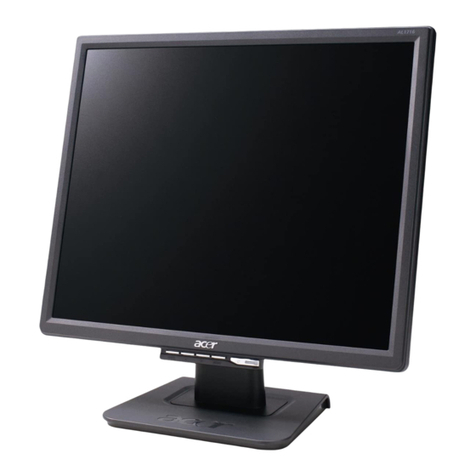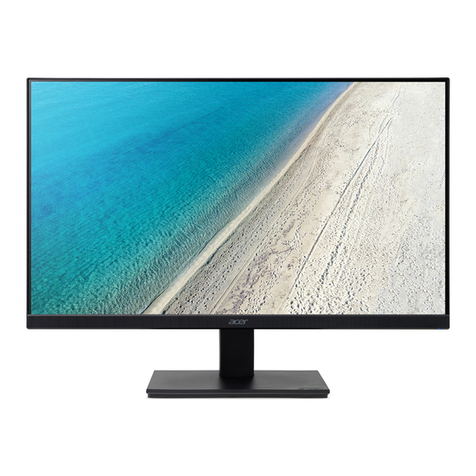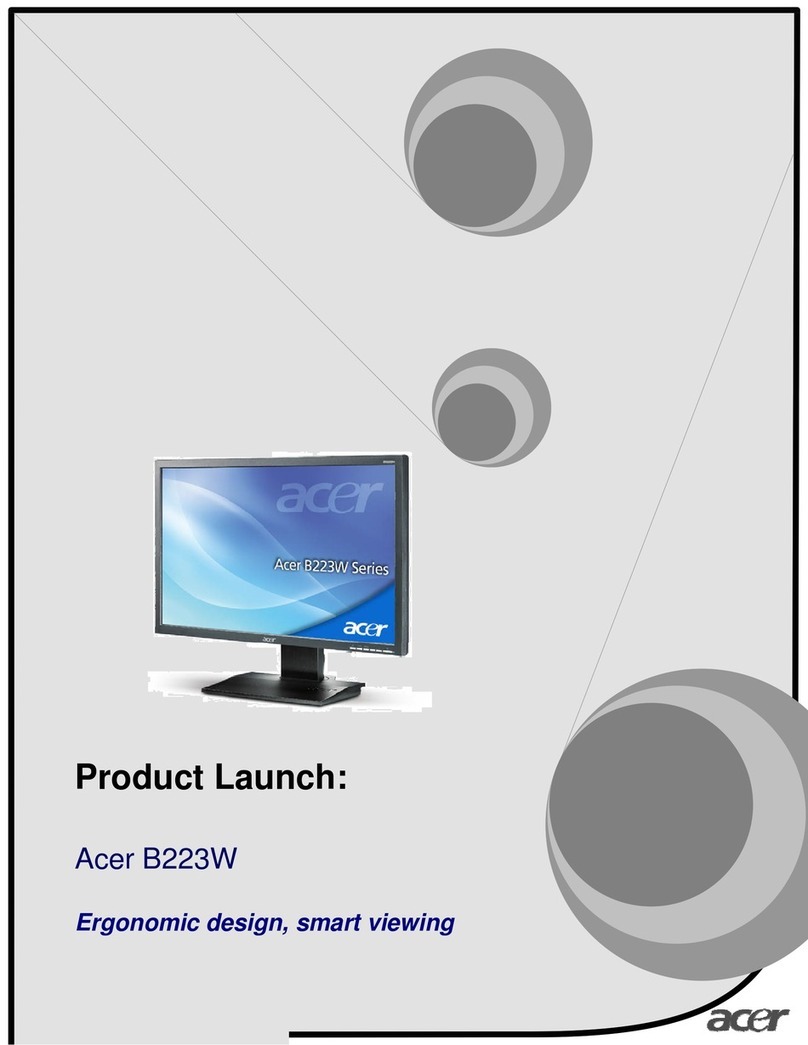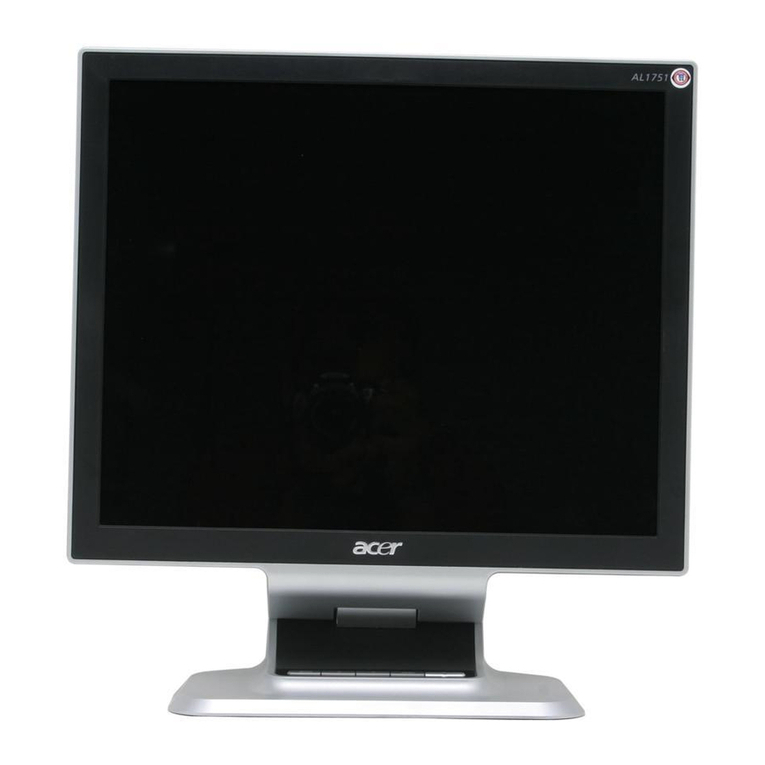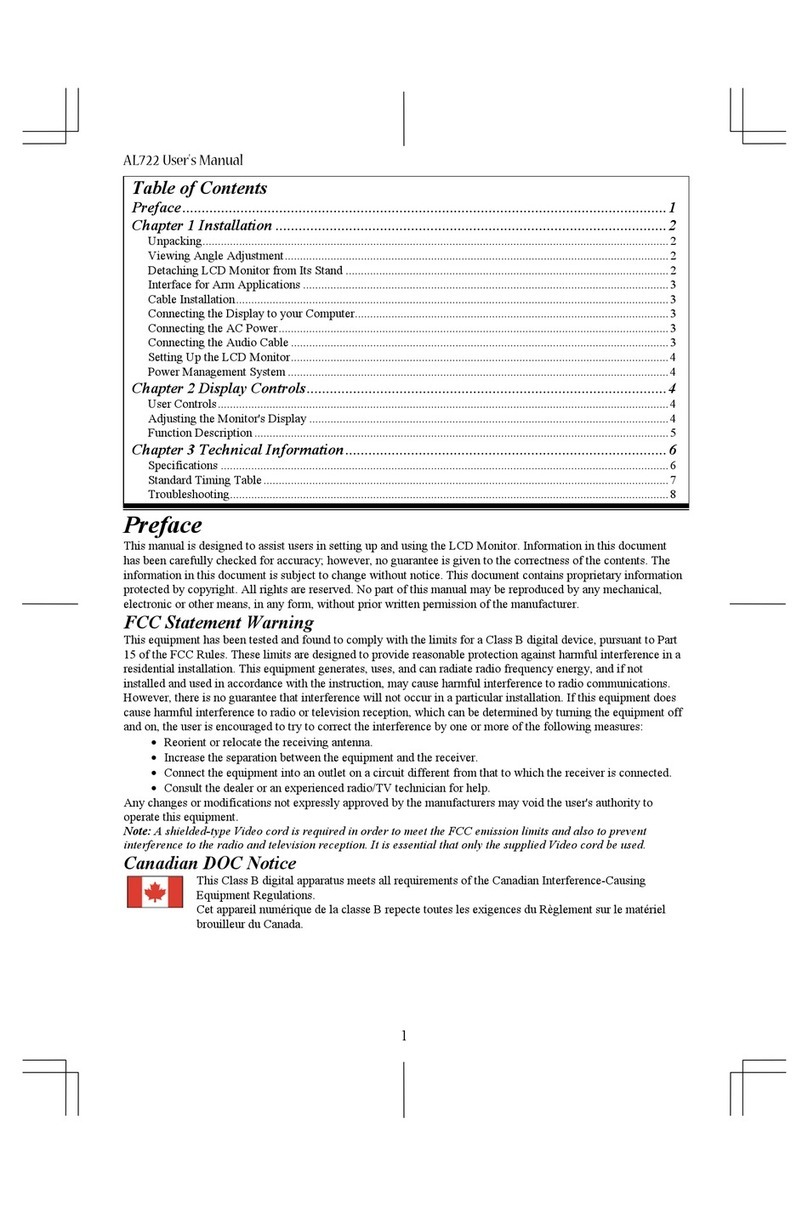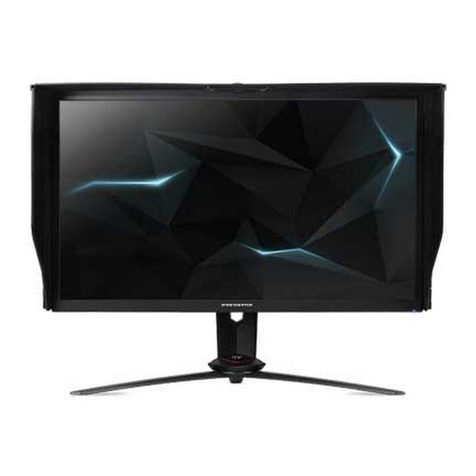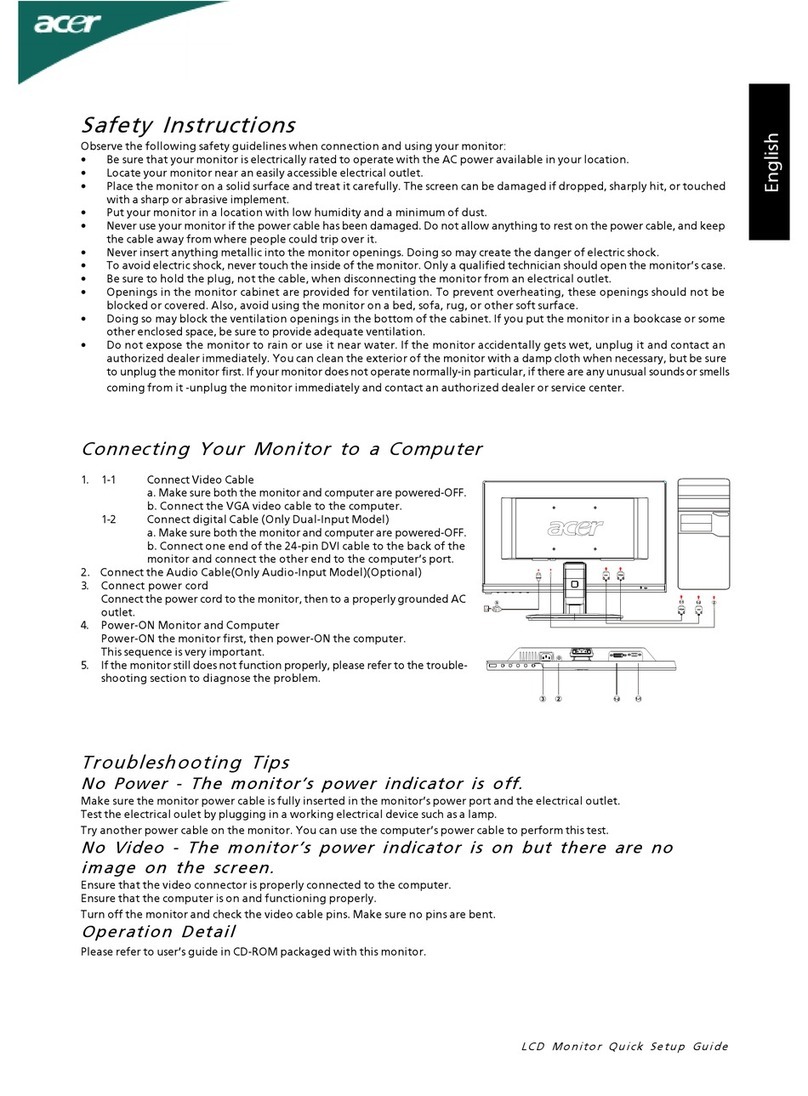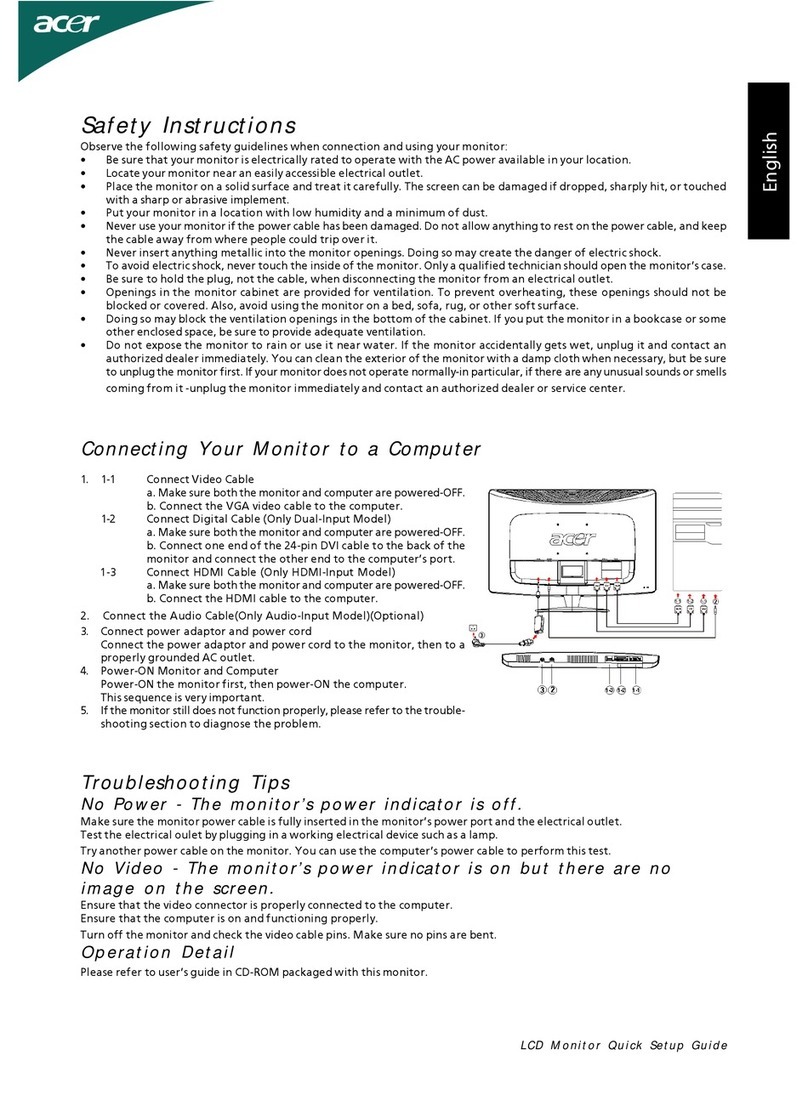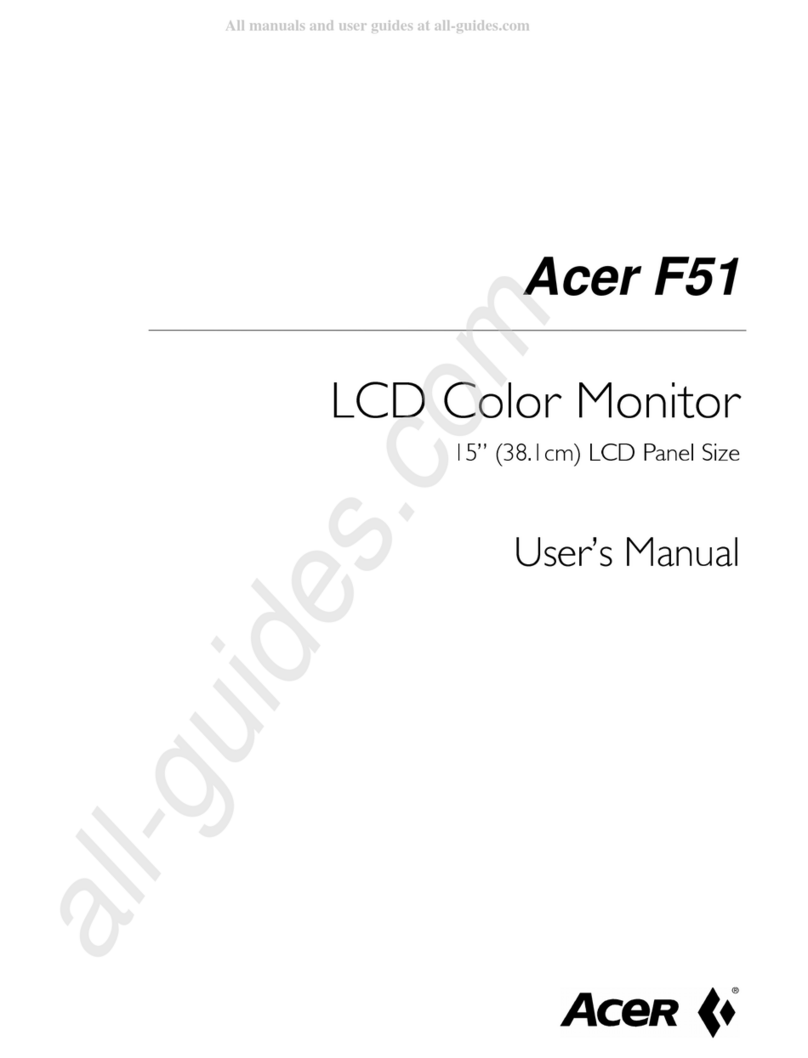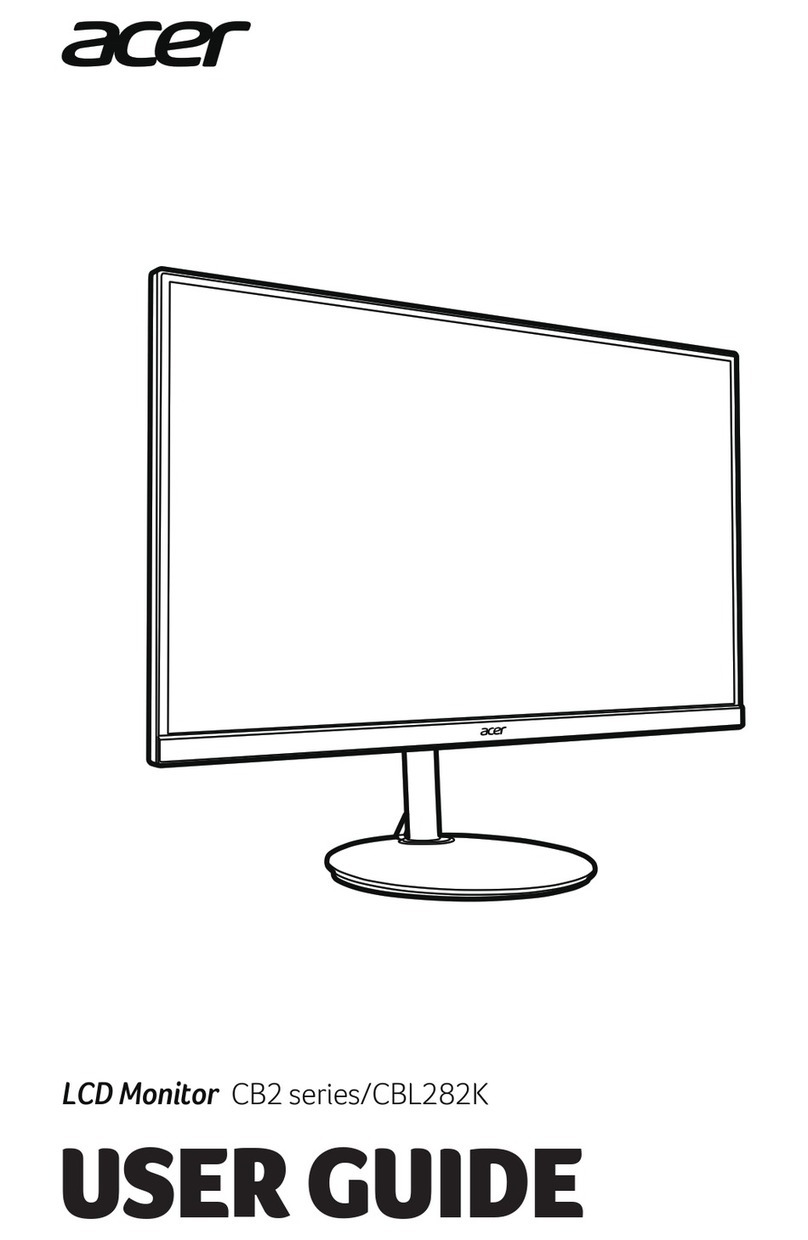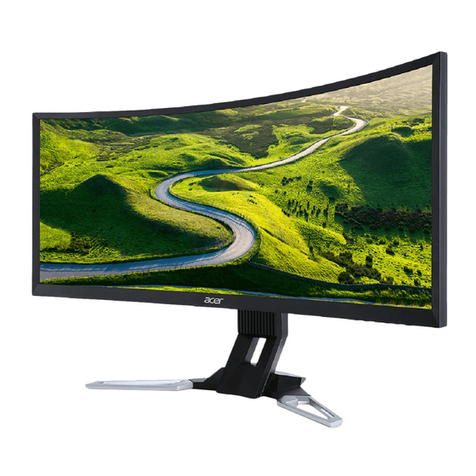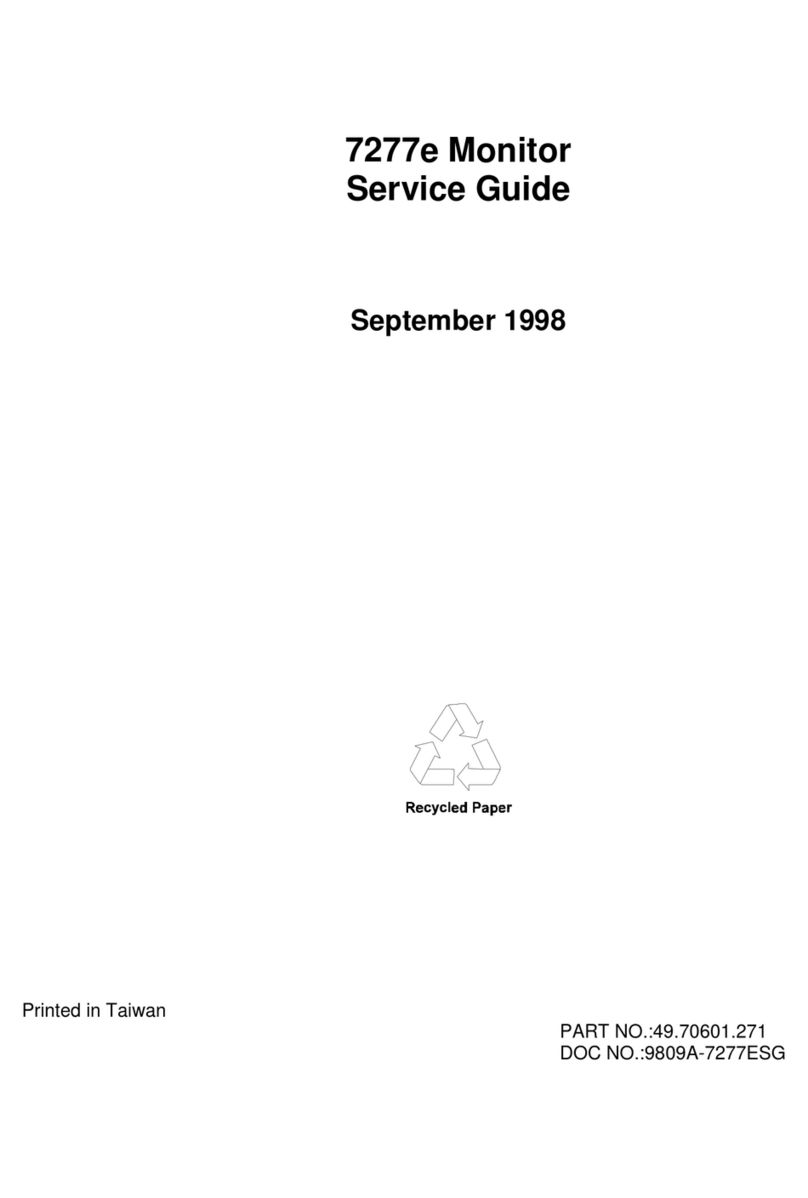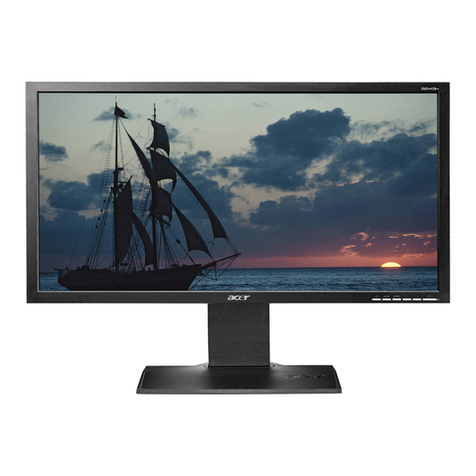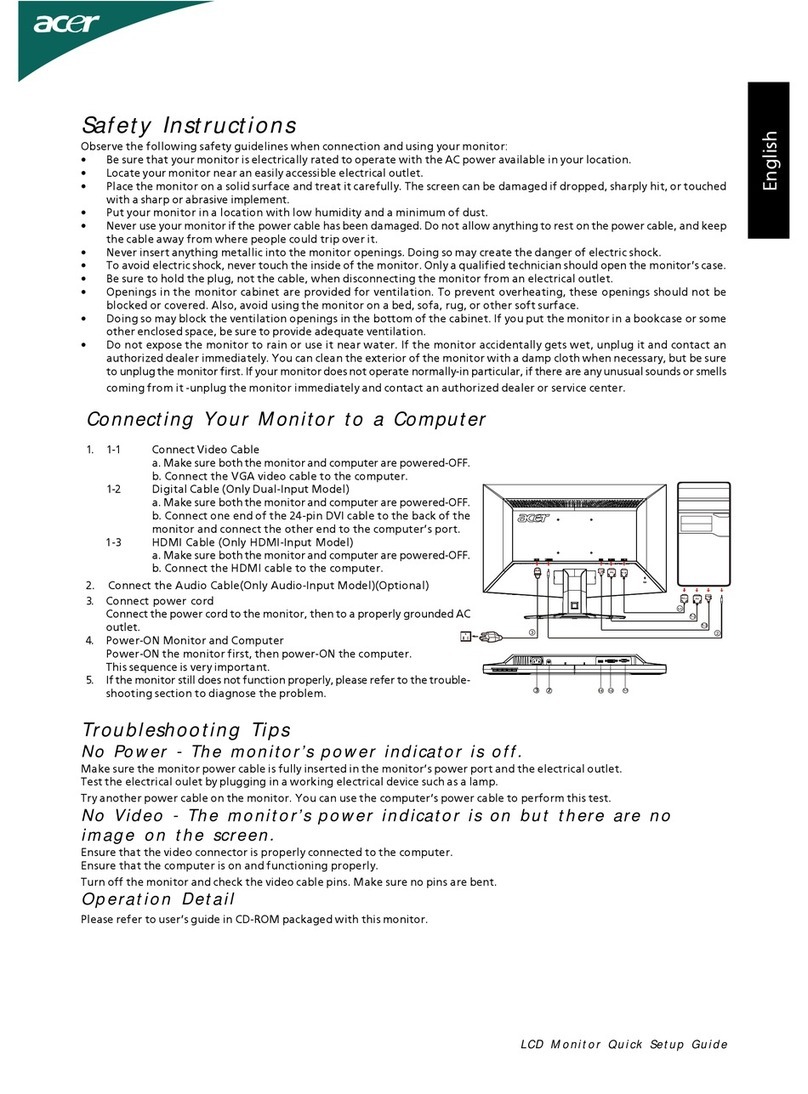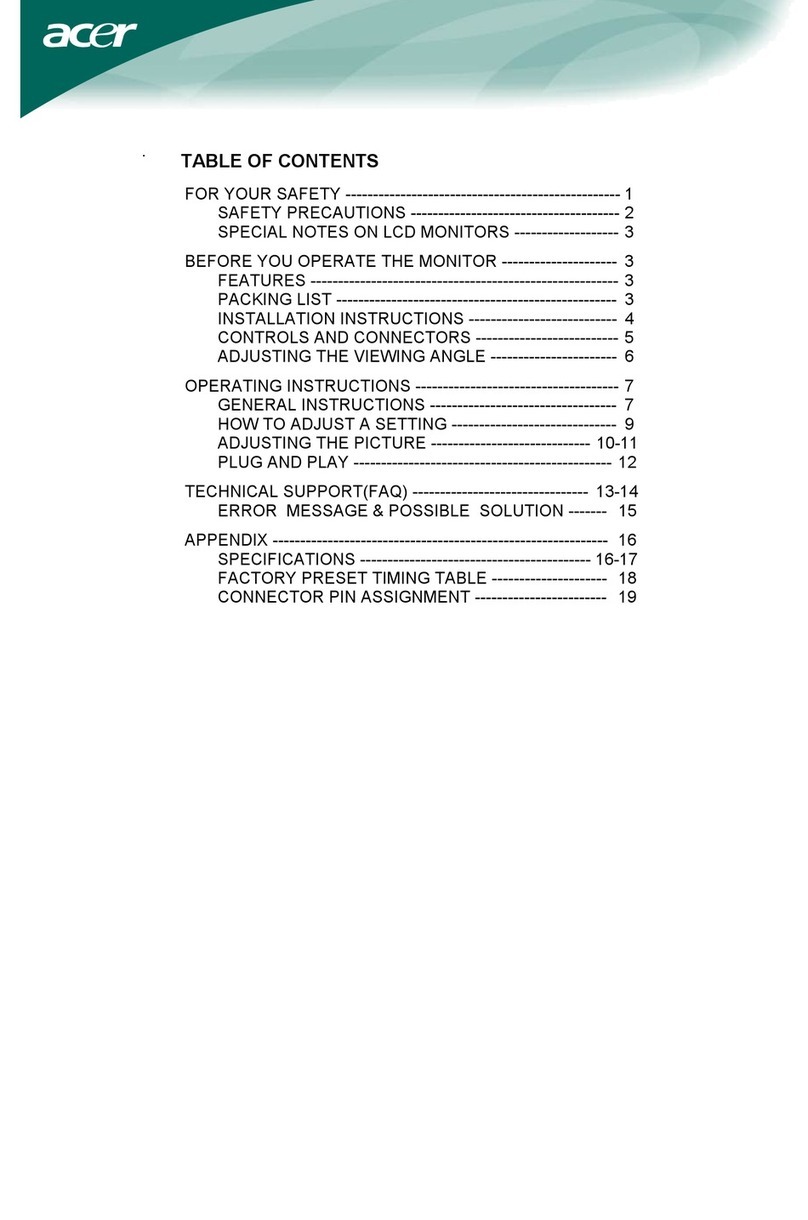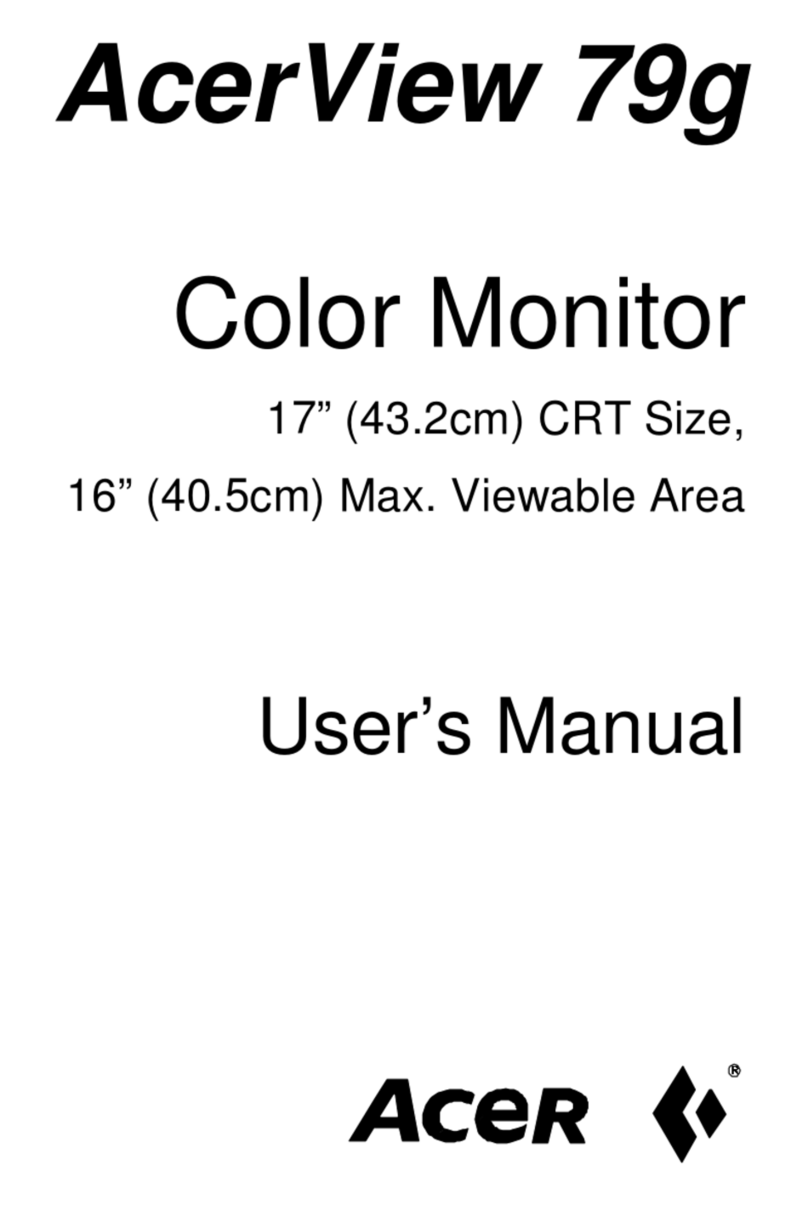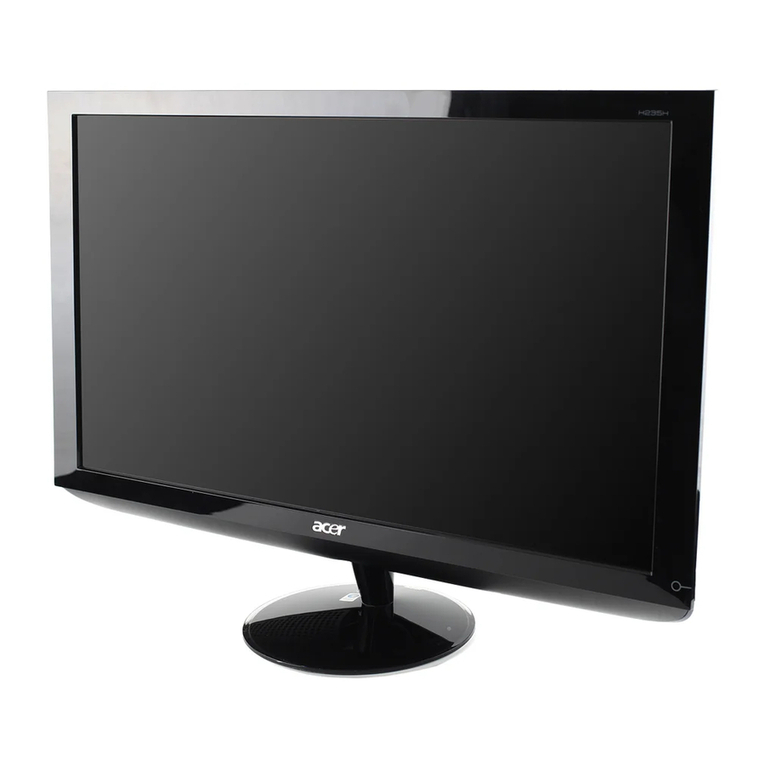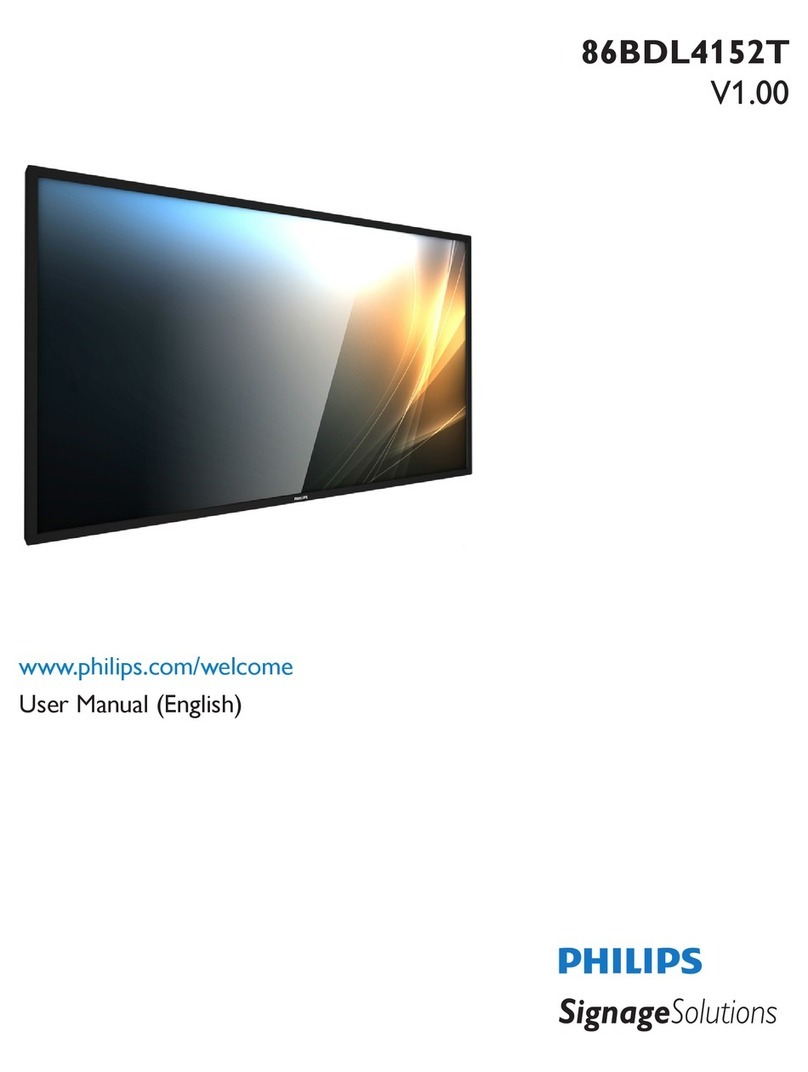5
2. PRECAUTIONS AND NOTICES
2-1 SAFETY PRECAUTIONS
1. Observe all caution and safety related notes located inside the display cabinet.
2. Operation of the display with the cover removed, may cause a serious shock hazard from the display power supply.
Work on the display should not be attempted by anyone who is not thoroughly familiar with precautions necessary
when working on high voltage equipment.
3. Do not install, remove or handle the picture tube in any manner unless shatter-proof goggles are worn. People who
are not so equipped should be kept away while handling picture tube. Keep picture tube away from the body while
handling.
4. The picture tube is constructed to limit X-RAY radiation to 0.5 mR/HR. For continued protection, use the
designated replacement tube only, and adjust the voltages so that the designated maximum rating at the anode will
not be exceeded.
5. Symbol “★” means safety relative parts. The use of substitute replacement parts which do not have the same
characteristics as specified in the parts list may create shock, fire or explode etc.
6. Symbol “ ” means X-ray relative parts. Before replacing any of these components please read the parts list in this
manual carefully to avoid creating higher anode voltage or x-ray. Especially for sealed controls, such as VR901,
VR902, VR401 and FBT screen VR etc, which were sealed by the manufacturer once their optimum position has
been set, please don’t dismantle them as your likes, otherwise you will break or damage the component. If you
need replace the parts with sealed control, please adjust the relative VR to make sure the B+ voltage under
60.5KVdc and well seal it with A+B glue or equivalent, which you can not move away with one screw driver.
7. Before returning a serviced display to the customer, a thorough safety test must be performed to verify that the
display is safe to operate without danger or shock. Always perform an AC leakage current check on the exposed
metallic parts of the cabinet, such as screw heads.
Test method for current leakage is described as follow.
(a) Plug the AC line cord directly into rated AC outlet (do not use a line isolation transformer during this check).
(b) Use an AC voltmeter having 5000 ohms per volt or with more sensitivity in the following manner: Connect a
1500 ohms 10 Watt resistor, paralleled by a 0.15UF, AC type capacitor between a known good earth ground
(water pipe, conduit, etc.) and the exposed metallic parts simultaneously. Measure the AC voltage across the
combination of 1500 ohms resistor and 0.15UF capacitor.
(c) Reverse the AC plug at the AC outlet and repeat AC voltage measurements for each exposed metallic part.
(d) Voltage measured must not exceed 0.5 volts RMS. This corresponds to 0.35 milliamp AC. Any value
exceeding this limit constitutes a potential shock hazard and must be corrected immediately.
2-2 PRODUCT SAFETY NOTICE
Many electrical and mechanical parts in this chassis have special safety visual inspections and the protection afforded by
them cannot necessarily be obtained by using replacement components rated for higher voltage, wattage, etc. Before
replacing any of these components read the parts list in this manual carefully. The use of substitute replacement parts
which do not have the same safety characteristics as specified in the parts list may create shock, fire, X-RAY radiation
or other hazards.
2-3 SERVICE NOTES
1. When replacing parts or circuit boards, clamp the lead wires around terminals before soldering.
2. When replacing a high wattage resistor (more than 1/2W of metal oxide film resistor) in circuit board, keep the
resistor about 10mm (1/2 in) away from circuit board.
3. Keep wires away from high voltage or high temperature components.
4. Keep wires in their original position so as to reduce interference.


